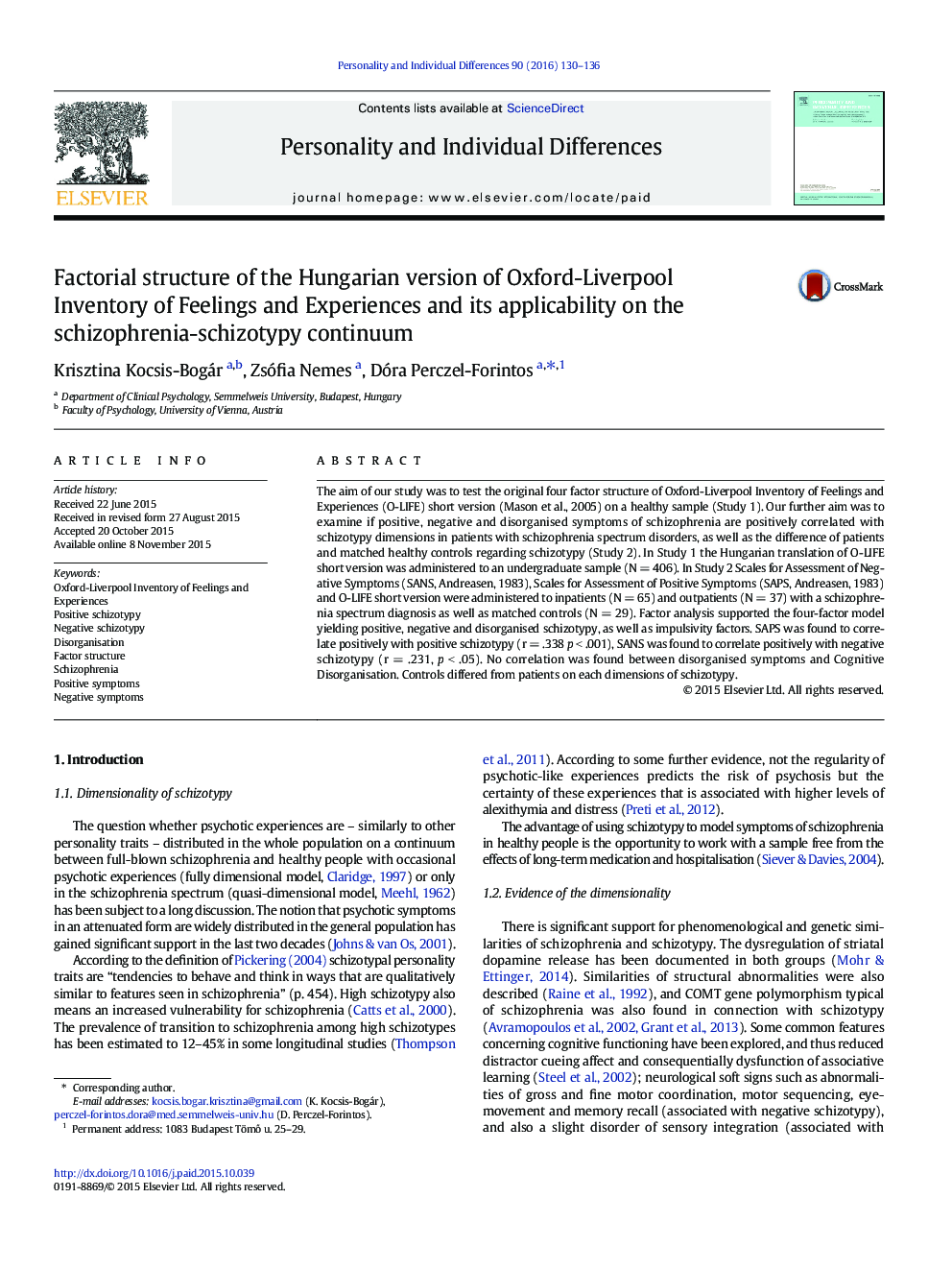| Article ID | Journal | Published Year | Pages | File Type |
|---|---|---|---|---|
| 889838 | Personality and Individual Differences | 2016 | 7 Pages |
•The four-factor structure of O-LIFE had the best fit in our data in a healthy sample.•The following factors were found: positive, negative and disorganised schizotypy, as well as impulsivity.•Positive symptoms of schizophrenia significantly correlated with positive schizotypy.•Negative symptoms of schizophrenia significantly correlated with negative schizotypy
The aim of our study was to test the original four factor structure of Oxford-Liverpool Inventory of Feelings and Experiences (O-LIFE) short version (Mason et al., 2005) on a healthy sample (Study 1). Our further aim was to examine if positive, negative and disorganised symptoms of schizophrenia are positively correlated with schizotypy dimensions in patients with schizophrenia spectrum disorders, as well as the difference of patients and matched healthy controls regarding schizotypy (Study 2). In Study 1 the Hungarian translation of O-LIFE short version was administered to an undergraduate sample (N = 406). In Study 2 Scales for Assessment of Negative Symptoms (SANS, Andreasen, 1983), Scales for Assessment of Positive Symptoms (SAPS, Andreasen, 1983) and O-LIFE short version were administered to inpatients (N = 65) and outpatients (N = 37) with a schizophrenia spectrum diagnosis as well as matched controls (N = 29). Factor analysis supported the four-factor model yielding positive, negative and disorganised schizotypy, as well as impulsivity factors. SAPS was found to correlate positively with positive schizotypy (r = .338 p < .001), SANS was found to correlate positively with negative schizotypy (r = .231, p < .05). No correlation was found between disorganised symptoms and Cognitive Disorganisation. Controls differed from patients on each dimensions of schizotypy.
